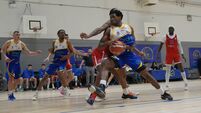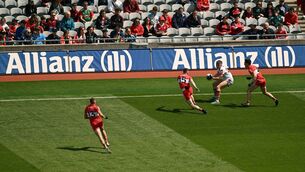Hurling shooting stars have left their mark

Tipp attacking the town goal and Shane McGrath driving a ball in towards top of the right. “The bould Lar,” as Kelly describes him, latching onto it, turning, surveying his options and playing it back towards the half-forward line to pick out Kelly. Nearer the left touchline than the right, the Mullinahone man veers onto his stronger side and puts the sliotar over the bar from 35 metres out.
He would never do it again in the blue and gold.












